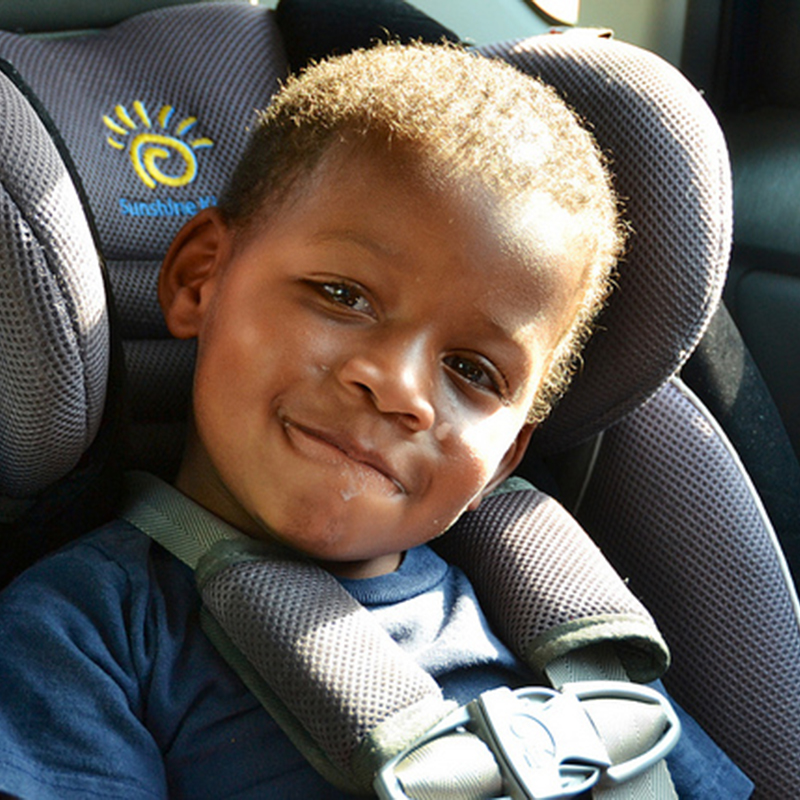Car Seat Safety by Kids Safety Network.
If you are traveling with a young child, the use of a car seat is non-negotiable.
As parents and caregivers, we have this responsibility towards our kids to ensure that they are safe and protected at all times. Selecting a car seat is not as easy as just walking into a store and buying any old car seat, and it doesn’t necessarily mean that your child is fully protected.
There are other factors you need to consider when buying, installing and fitting your child in a car seat. Car seat safety is essential.
Here are 9 safety points to consider about the safety of your child’s car seat:
- There are 3 types of car seats – rear-facing, forward-facing and booster. When buying a car seat, you need to buy the seat which is appropriate for your child’s age. Read the labels on the car seat and look for the height, weight and age limits to make sure it’s the correct choice for your child.
- There is no real evidence that car seats “expire” however it is evident that parts of a car seat can wear away or perish, so it’s recommended that you steer clear of car seats that are older than 5 years. You should also avoid borrowing a used seat or second-hand stores where you do not know the previous owner and the complete history of the car seat. The seat may have missing parts or instructions or it may have been involved in a crash or even recalled. There is no sure way to be safe in these instances.
- An important feature to look out for when buying a car seat is head and side impact protection. The foam sides encompass the child’s head, cushioning and protecting them from the dangerous force and impact during an accident.
- The back seat is the best and safest place for all children under the age of 13 to sit and also to place a car seat. You need to consult the owner’s manual of your car, to see the possible options for placing the seat, also taking into account the safety of other passengers in your vehicle.
- Take cognisance of the most common fitting problems and make sure that your child’s seat is free of these problems:
- Loose harnesses
- Twisted seatbelts
- Harness straps sitting incorrectly when child is buckled in
- Not all Isofix points connected
If you are having problems with the installation or concerned about the car seat safety, there are CPS technicians who will assist you in ensuring your child’s seat is properly in place. Also view our article on car seat installation
- Never put your child in a car seat with a jacket on, as the bulky fabric can prevent the car seat straps from sitting correctly around your child’s body. The extra slack in the harness means that your child won’t be completely contained in the event of an impact. If it’s cold, rather put a blanket over your child after strapping them in.
- When it comes to car seat safety, it’s smart to delay changing your child’s current seat until they reach the maximum weight or height listed on the label. It is also recommended that children should ride in a rear-facing seat until they are at least 2 years old. The reason for this is that should you be involved in a frontal collision, the rear-facing car seat allows for the child’s head, neck, and spine to move evenly into the seat and not away from it.
- Once a child is over 2 years old and has outgrown a rear-facing car seat, they should sit in a forward-facing car seat with a 5-point harness until they reach the highest height or weight allowed in the seat. Once they outgrow their forward-facing car seat, the booster seat is the next step.
- It’s also best to delay the move to a booster seat until a child reaches the highest weight or height limit of the car seat. Booster seats come with lap and shoulder belt or a seat belt alone, which is a lot less protection than when you keep your child forward-facing in a harness.
- When your child outgrows his or her car seat, you may give it away if it hasn’t been involved in a car crash, has all the instructions and original parts and you have the age and history of the car seat. If the seat is older than the recommended 5-year-period, you will need to dispose of it by taking it apart and putting the pieces in separate dark garbage bags so that nobody can find and reuse the seat.
